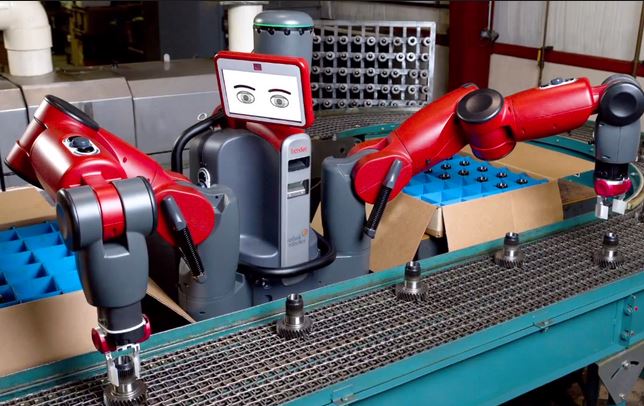By now we’re familiar with industrial robots, since they’ve been around for years, but with modern technology being used to make robots seemingly more intelligent, why aren’t they working beside us at our jobs? Although we’re still quite a long way from having artificial, humanoid beings in the workplace alongside factory workers, mainly due to safety reasons, researchers at the University of Wisconsin (UW) and the Massachusetts Institute of Technology (MIT) are working to effectively integrate human-robot teams within manufacturing environments.
Cobots
Funded by the National Science Foundation (NSF) as part of the National Robotics Initiative program, the team’s goal is to develop what they call “cobots,” or robots that can work collaboratively and side-by-side with their human counterparts. According to assistant professor of computer sciences at UW and director of the university’s Human-Computer Interaction Laboratory, Bilge Mutlu, their goal is to improve work processes and integrate the work of the robots with the work of the people. “This new family of robotic technology will change how manufacturing is done,” he said. “New research can ease the transition of these robots into manufacturing by making human-robot collaboration better and more natural.”
Recently the robotics industry has introduced platforms that are less expensive and intended to be easier to reprogram and integrate into manufacturing, such as robots based on a platform called Baxter, created by Rethink Robotics. Each Baxter robot has two arms and a tablet-like panel functions as its eyes, which provide cues to help human workers anticipate what the robot will do next.

The Baxter robot at work. Image via robotrumor.com.
By combining movement-based learning with machine arms that mimic the movement of human arms, Baxter can recognize its position and adjust its grip as necessary. If it encounters an object, such as a human hand, it will stop moving, since its cameras continuously check its position and that of nearby objects. This also means it can handle variable tasks and not just repetitive ones. Mutlu believes these types of cooperative robots are safer to operate around humans in the work environment.
Team Building
Much of the focus of the researchers is figuring out the best ways to develop efficient robot-human teams. Assistant professor of aeronautics and astronautics at MIT and Mutlu’s counterpart on the project, Julie A. Shah, is responsible for breaking down the components of human-robot teamwork to determine who should perform various tasks. Mutlu’s work complements Shah’s by focusing on how humans and robots actually interact.
“People can sometimes have difficulty figuring out how best to work with or use a robot, especially if its capabilities are very different from people’s,” said Shah. “Automated planning techniques can help bridge the gap in our capabilities and allow us to work more effectively as a team.”
Eye Contact
One angle of the project’s research explores not only how humans interact with the robots, but also the other way around. Mutlu’s team is building on previous work related to topics such as gaze aversion in humanoid robots.
According to Mutlu, gaze aversion has to do with how we interpret eye contact. “If I’m looking at you, it might be that I need something from you. If a robot isn’t looking at you, but at something else, it might be telling you that it needs something,” he said. He added that the tablet eyes on the Baxter robot provide cues to what the robot is doing. “When the robot is going to pick up a piece, the tablet will turn to the piece it’s going to pick up. We look at the things we’re working on. So do these robots,” he said. “There’s a certain amount of behavioral science in this.”
Although much more work remains to be done on the project, Mutlu is hoping to get traction pretty quickly. It’s a three-year project, and he and his team have been at it for six months.
Interested to learn more about Professor Mutlu's work? Watch the video presentation below.
Story via Control Design.
Advertisement
Learn more about Electronic Products Magazine





